Related Research Articles

Viva Villa! is a 1934 American pre-Code film directed by Jack Conway and starring Wallace Beery as Mexican revolutionary Pancho Villa. The screenplay was written by Ben Hecht, adapted from the 1933 book Viva Villa! by Edgecumb Pinchon and O. B. Stade. The film was shot on location in Mexico and produced by David O. Selznick. There was uncredited assistance with the script by Howard Hawks, James Kevin McGuinness, and Howard Emmett Rogers. Hawks and William A. Wellman were also uncredited directors on the film.

Francisco "Pancho" Villa was a general in the Mexican Revolution. He was a key figure in the revolutionary movement that forced out President Porfirio Díaz and brought Francisco I. Madero to power in 1911. When Madero was ousted by a coup led by General Victoriano Huerta in February 1913, he joined the anti-Huerta forces in the Constitutionalist Army led by Venustiano Carranza. After the defeat and exile of Huerta in July 1914, Villa broke with Carranza. Villa dominated the meeting of revolutionary generals that excluded Carranza and helped create a coalition government. Emiliano Zapata and Villa became formal allies in this period. Like Zapata, Villa was strongly in favor of land reform, but didn't implement it when he had power. At the height of his power and popularity in late 1914 and early 1915, the U.S. considered recognizing Villa as Mexico's legitimate authority.
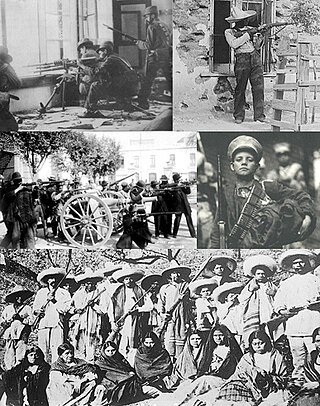
The Mexican Revolution was an extended sequence of armed regional conflicts in Mexico from approximately 1910 to 1920. It has been called "the defining event of modern Mexican history". It resulted in the destruction of the Federal Army and its replacement by a revolutionary army, and the transformation of Mexican culture and government. The northern Constitutionalist faction prevailed on the battlefield and drafted the present-day Constitution of Mexico, which aimed to create a strong central government. Revolutionary generals held power from 1920 to 1940. The revolutionary conflict was primarily a civil war, but foreign powers, having important economic and strategic interests in Mexico, figured in the outcome of Mexico's power struggles; the United States involvement was particularly high. The conflict led to the deaths of around two million people, mostly combatants.
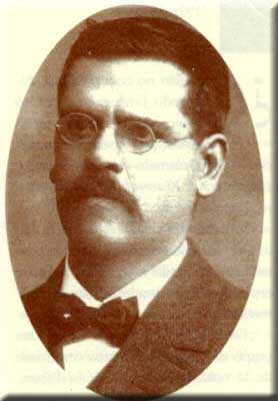
Mariano Azuela González was a Mexican writer and medical doctor, best known for his fictional stories of the Mexican Revolution of 1910. He wrote novels, works for theatre and literary criticism. He is the first of the "novelists of the Revolution," and he influenced other Mexican novelists of social protest.

The Pancho Villa Expedition—now known officially in the United States as the Mexican Expedition, but originally referred to as the "Punitive Expedition, U.S. Army"—was a military operation conducted by the United States Army against the paramilitary forces of Mexican revolutionary Francisco "Pancho" Villa from March 14, 1916, to February 7, 1917, during the Mexican Revolution of 1910–1920.

Martín Luis Guzmán Franco was a Mexican novelist and journalist. Along with Mariano Azuela and Nellie Campobello, he is considered a pioneer of the revolutionary novel, a genre inspired by the experiences of the Mexican Revolution of 1910. He spent periods in exile in the United States and Spain. He founded newspapers, weekly magazines, and publishing companies. In 1958, he was awarded Mexico's National Prize in Literature.

Pedro Gregorio Armendáriz Hastings was a Mexican film actor who made films in both Mexico and the United States. With Dolores del Río and María Félix, he was one of the best-known Latin American movie stars of the 1940s and 1950s.
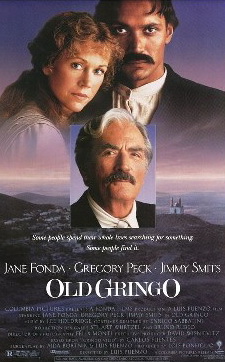
Old Gringo is a 1989 American romantic adventure film starring Jane Fonda, Gregory Peck, and Jimmy Smits. It was directed by Luis Puenzo and co-written with Aída Bortnik, based on the 1985 novel The Old Gringo by Mexican novelist Carlos Fuentes.

References and depictions of Mexican revolutionary Emiliano Zapata, places and things named for and commemorating him.
Alfredo Ripstein was a Mexican film producer of European-Jewish descent. He is credited with helping shape Mexico's film industry in the period surrounding World War II.

The Soldiers of Pancho Villa is a 1959 Mexican epic historical drama film co-written, produced, and directed by Ismael Rodríguez, inspired by the popular Mexican Revolution corrido "La Cucaracha". It stars María Félix and Dolores del Río in the lead roles, and features Emilio Fernández, Antonio Aguilar, Flor Silvestre, and Pedro Armendáriz in supporting roles.
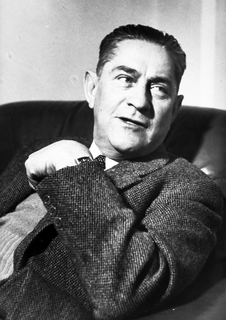
Fernando de Fuentes Carrau was a Mexican film director, considered a pioneer in the film industry worldwide. He is perhaps best known for directing the films El prisionero trece, El compadre Mendoza, and Vámonos con Pancho Villa, all part of his Revolution Trilogy on the Mexican Revolution.

The Mexican Border War, or the Border Campaign, refers to the military engagements which took place in the Mexican–American border region of North America during the Mexican Revolution. The period of the war encompassed World War I, and the German Empire attempted to have Mexico attack the United States, as well as engaging in hostilities against American forces there itself.
Godfather Mendoza is a 1934 Mexican film. It was directed by Fernando de Fuentes, and is the second of his Revolution Trilogy, preceded by El prisionero trece and followed by Vámonos con Pancho Villa.

Luz Elena Ruiz Bejarano, more commonly known by her stage name Lucha Villa, is a Mexican singer and actress.
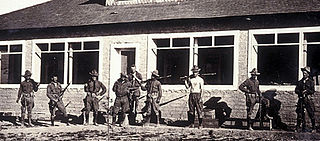
The raid on Glenn Springs occurred on the night of May 5–6, 1916, when Mexican Villistas and Carrancistas attacked the towns of Boquillas and Glenn Springs, Texas. In Glenn Springs, the raiders burned several buildings and fought a three-hour battle with a small force of American soldiers who were stationed there. At the same time, a second party of rebels robbed a general store and a silver mine in Boquillas. Four Americans were killed and the rebels took two hostages to Coahuila. In response to the attack, the United States Army launched a short punitive expedition into Mexico, fought with the rebels, and rescued the captives.
"Jesusita en Chihuahua" is a Mexican polka which was written by Quirino Mendoza y Cortés while he was serving as a Lt. Colonel in the Mexican Revolution and directing the military band in Puebla. Its premiere was held on Christmas Day 1916 and it has since been covered by a multitude of artists, under a variety of names. The composition became a trademark of the Mexican Revolution and was Pancho Villa's favorite musical piece to have his bands play during combat. The piece centers on soldaderas, women who accompanied the revolutionaries, tending to their needs and on occasion even taking up arms to participate in combat.
The Bad Man is a 1923 American silent Western film with prominently featured satirical and comedic elements. The film was directed by Edwin Carewe, who produced it for his own motion picture company and adapted the scenario from the play of the same name by Porter Emerson Browne. The play had opened at Broadway's Comedy Theatre in August 1920, and ran for a very successful 342 performances, closing in June 1921. The film version, from Edwin Carewe Productions, was released by Associated First National Pictures on October 8, 1923. The title role was played by the star of the play's Broadway and touring productions, Holbrook Blinn, and the other leading parts filled by Jack Mulhall, Walter McGrail and Enid Bennett.
The Revolution Trilogy is a series of 1930s movies about the Mexican Revolution by Fernando de Fuentes: El prisionero trece (1933), El compadre Mendoza (1934) and Vámonos con Pancho Villa (1936). All three share a disenchanted view of the conflict, in opposition to the more common romantic, folk, and heroic viewpoints present in more well-known productions.
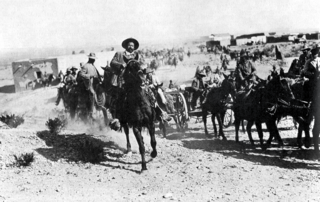
The Battle of Ojinaga, also known as the Taking of Ojinaga, was one of the battles of the Mexican Revolution and was fought on January 11, 1914. The conflict put an end to the last stronghold of the Federal Army in Northern Mexico.
References
- ↑ Sherman, Scott (Winter 2000). "Living La Vida Grande". Dissent. Retrieved 3 July 2013.
- ↑ "Pancho Villa now celebrated in New Mexico". USA Today . 3 September 2011.
- ↑ Fisher, Austin (6 February 2014). Radical Frontiers in the Spaghetti Western: Politics, Violence and Popular Italian Cinema. I.B.Tauris. p. 124. ISBN 9780857737700.
- ↑ Damacio Tovares, Raúl (2002). Manufacturing the Gang: Mexican American Youth Gangs on Local Television News. Greenwood Publishing Group. p. 43. ISBN 9780313318276.
- ↑ Dash, Mike (6 November 2012). "Uncovering the Truth Behind the Myth of Pancho Villa, Movie Star". Smithsonian Mag . Retrieved 29 April 2018.
- ↑ Gevinson, Alan (1997). Within Our Gates: Ethnicity in American Feature Films, 1911-1960. American Film Institute . University of California Press. p. 343. ISBN 9780520209640.
- ↑ Margarita de Orellana, Filming Pancho Villa: How Hollywood Shaped the Mexican Revolution: North American Cinema and Mexico, 1911–1917. New York: Verso, 2007.
- ↑ "Do the wrong thing: 90 years, 90 movies that should have been nominated for Best Picture". The A.V. Club . Onion, Inc. 28 February 2018. Retrieved 5 May 2018.
- ↑ Ciampaglia, Dante A.; Schiling, Mary Kaye (23 February 2018). "All 90 Best Picture Oscar Winners, Ranked: Part 3—30 to 1". Newsweek . Retrieved 5 May 2018.
- ↑ Gallo, Phil (4 September 2003). "And Starring Pancho Villa as himself". Variety . Penske Business Media, LLC. Retrieved 5 May 2018.
- ↑ Lloyd, Robert (6 September 2003). "Pancho Villa, the reel story". Los Angeles Times . Retrieved 5 May 2018.
- ↑ "Walsh and Villa". Los Angeles Times . 10 August 2013. Retrieved 5 May 2018.
- ↑ Butterfield, Beldon (31 December 2012). Mexico Behind the Mask: A Narrative, Past and Present. Potomac Books, Inc. p. 76. ISBN 9781612344263.
- ↑ García Riera, Emilio (1987). México visto por el cine extranjero. Ediciones Era. p. 18. ISBN 9789684111639.
- ↑ Gaytán, Marie Sarita (12 November 2014). ¡Tequila!: Distilling the Spirit of Mexico. Stanford University Press. p. 57. ISBN 9780804793100.
- ↑ Pallot, James (1995). The Movie Guide . Berkeley Publishing Group. p. 961. ISBN 9780399519147.
- ↑ International Motion Picture Almanac. Quigley Publications. 1947. p. 381.
- ↑ Pitts, Michael R. (1984). Hollywood and American History: A Filmography of Over 250 Motion Pictures Depicting U.S. History . McFarland Publishing. pp. 332. ISBN 9780899501321.
- ↑ Institute, British Film (1988). The BFI Companion to the Western. p. 232. ISBN 9780233983325.
- ↑ Rowan, Terry (2016). Character-Based Film Series. Vol. Part 2. Lulu.com. p. 67. ISBN 9781365021305.
- ↑ Reed, Alan; Ohmart, Ben (2009). Yabba Dabba Doo!: The Alan Reed Story. BearManor Media. p. 96. ISBN 9781593933135.
- ↑ Mi primer diccionario histórico de Coahuila y de las bellas artes: Diccionario de la lengua española para uso escolar. Editorial del Valle de Cándamo. 2004. p. 114. ISBN 9789687487090.
- ↑ Rodriguez, Clara E. (2004). Heroes, Lovers, and Others: The Story of Latinos in Hollywood. Oxford University Press. p. 158. ISBN 9780195335132.
- ↑ Azuela, Mariano (1915). "Chapter XX". Los de Abajo.
- ↑ Katz, The Life and Times of Pancho Villa, p. 832.
- ↑ "Uchronia: Compadres".
- ↑ Pancho Villa by Billy Walker – lyrics
- ↑ Putting the legend of Pancho Villa to song